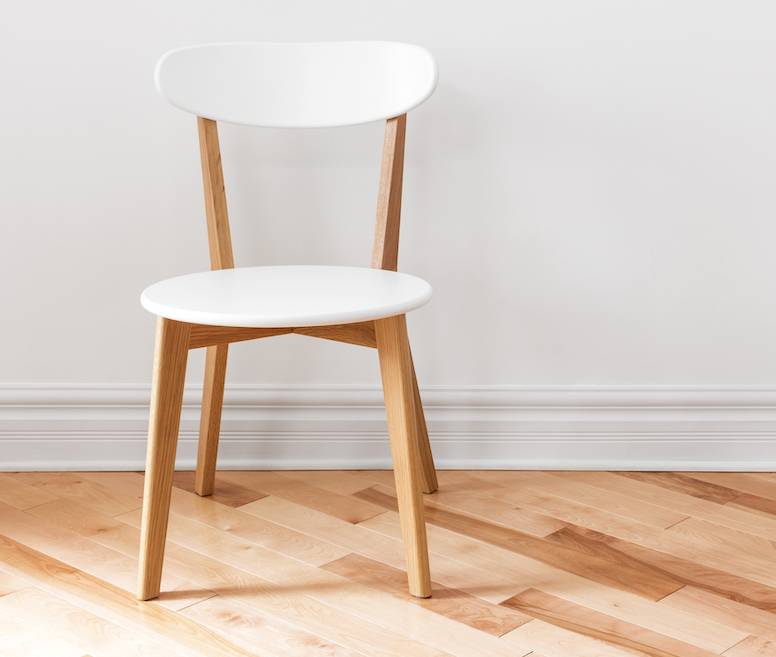Lower back pain can be annoying, stressful and completely debilitating if left untreated. The question is, why does it get worse when we’re sitting down?
This article will run through the detrimental effects sitting can have on your lower back and body in general as well as ways to alleviate pain.
How can sitting cause lower back pain?
Have you suddenly found yourself getting lower back – despite sitting for the same number of hours you used to sit for pre-pandemic?
During various lockdowns, a lot of us went from a comfy big office chair to the spare wooden chair that usually only comes out when the whole family comes round.
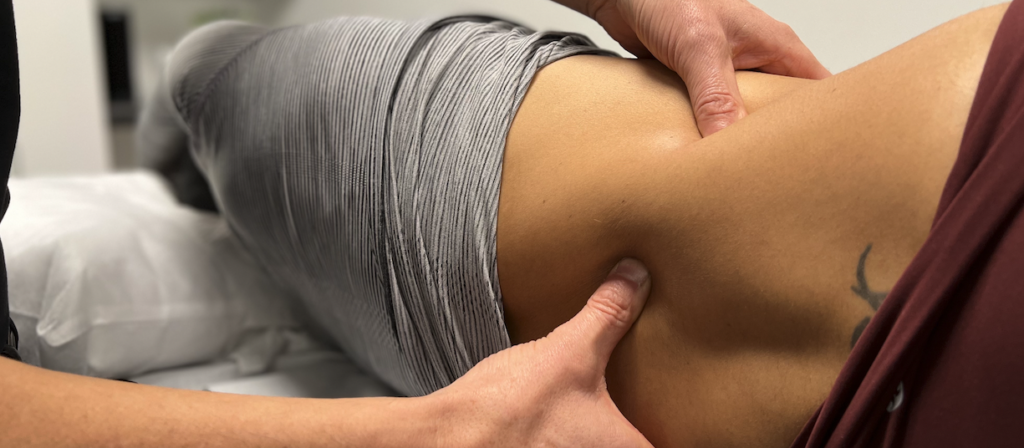
Working from home has been great for some, but for others new niggles, aches and pains have started to arise and are a lot more common than they used to be. Sitting for long periods of time is extremely detrimental to our overall health as well as posture, general movement capabilities and mobility capacity.
Sitting is considered to be a stress position and sitting for long periods of time causes compression of the spine and a reduction in blood flow. How you sit, what you are sitting on, the height of your desk, or being contorted into a weird cross legged position will all contribute to increased stress and compression through the back leading to lower back pain.
Poor posture, pinched nerves, muscle degeneration and increased weight gain are just 4 main complications from sitting for long periods of time.
Why is sitting so bad?
Sitting for long periods of time in one position can lock your body into said position. When trying to stand up or move the tightness and almost burning sensation we get is your body trying to recover from this locked unnatural position. Over time a more pronounced slouch is noticed as the muscles of the back get weaker and the muscles of the chest get tighter. Early detection of your sitting position is the best way of preventing further complications from poor posture.
Pinched nerves in the back but predominantly in the lower back can be caused by an increase in tension and compression due to sitting down for too long. Pinched nerves can trigger other symptoms like neck pain or sciatic nerve pain when pain is referred to other parts of the body.
Muscle atrophy
Muscle atrophy is caused when the muscles are not used. Consistent movement and exercise is required to keep muscles mass and the ability to support you in the correct position. Sitting for long periods can lead to muscular atrophy, where muscle groups like your glutes and leg muscles become unable to support their own weight.
Not only does sitting for long periods potentially cause a loss in muscle mass, it can cause an increase in body fat percentage as well. Moving is required to burn calories. If sat down for long periods, no movement or exercise is being done. No calories are being burned and this can lead to an increase in the likelihood of developing heart disease, diabetes, or stroke.
Why is existing lower back pain made worse by sitting?
Lower back pain is defined as pain in the vertebrae designated L1 through o L5. These compromise the part of the spine that curves inwards at the base. As said earlier, sitting is considered to be a stress position, so if you have existing lower back pain, sitting for any amount of time is going to be painful and likely to make your symptoms worse. Sitting in a slouched or hunched over position can put strain on the discs, the fluid- filled cushions that protect the vertebrae from running together.
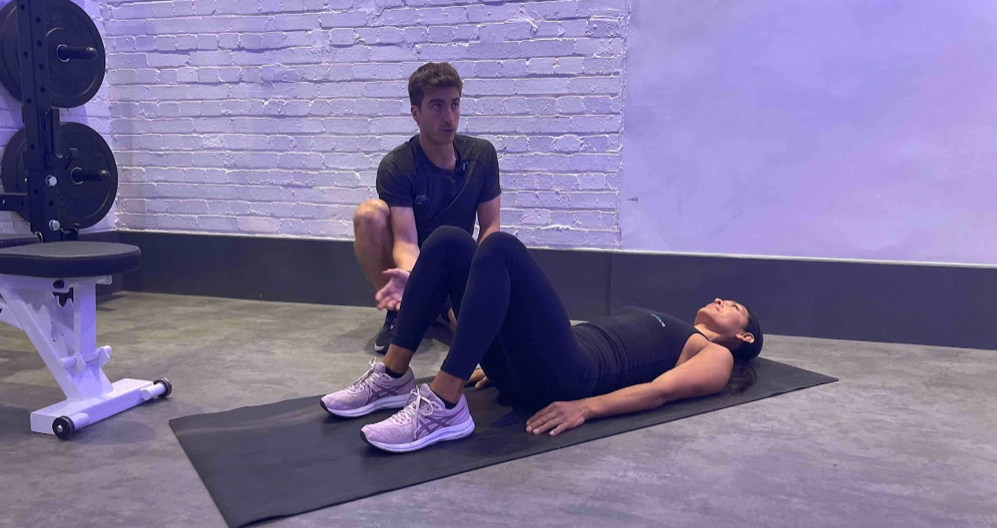
By sitting down your back muscles are not getting any stronger and your posture isn’t getting any better. Back strength and improved posture are two key components to getting you back to full health.
What’s the best sitting position for lower back pain?
If you are experiencing lower back pain, ideally you should refrain from sitting. However in the real world this is not always possible. If you do need to sit there are a few pointers you can follow that create a better seated position and posture to help alleviate pain but also not make things any worse.
- Sit for as little as possible- 10-15minutes at a time
- Sit with a back support at the curve of your back. A rolled up towel works well or most new office chairs these days have lumbar support build into them
- Keep your hips and knees at a right angle. Using a footstool if necessary as your legs should not be crossed but instead flat on the floor.
When it comes to your desk and monitor there are a few rules to follow to make sure you are set up for success.
- Monitor: Top of the monitor should be at eye level and slightly tilted. A distance of 45-70cm between your eyes and the monitor screen is optimal.
- Arms: Shoulders should be relaxed, forearms parallel to the floor and minimal bend at the wrist.
- Chair: Should have a backrest and an arm rest and should be height adjustable.
- Legs: As said above, hips and knees at right angles, thighs parallel to the floor.
- Feet: Parallel to the floor. Use a footrest if necessary.
Some exercises to help with lower back pain
Most exercise including pilates, yoga and strength training are proven to reduce lower back pain. Increasing full body strength, core strength and control, increasing blood flow and improving movement mechanics are all contributors to reducing pain through the lower back.
However I have listed a few exercises below that will help if you are at the start of your journey:
Glute Bridges or Supermans are perfect for improving strength and mobility through the lower back.
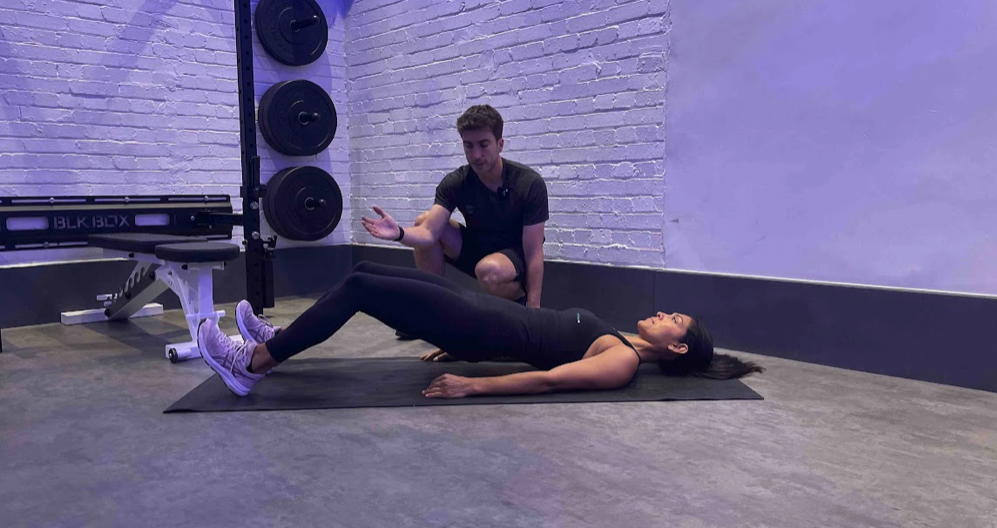
Glute Bridges work a person’s gluteus maximus, which is the large muscle of the buttocks. This muscle is engaged when there is movement from the hips. Whether this be into squat movement or a hip hinge movement. The gluteus maximus is one of the most important muscles in the body, and keeping it strong can help support the lower back.
To perform a bridge:
- Lie on the ground and bend the knees, placing the feet flat on the floor hip-width apart.
- Press the feet into the floor, keeping the arms by the sides.
- Raise the buttocks off the ground until the body forms a straight line from the shoulders to the knees.
- Squeeze the buttocks with the shoulders remaining on the floor.
- Lower the buttocks to the ground and rest for a few seconds.
- Repeat 15 times and then rest for 1 minute.
- Do 3 sets of 15 repetitions.
The superman exercise helps improve strength through the back extensors. These help to maintain good posture and run along either side of the spine. Weak back extensors can reduce spinal and pelvic support, but superman’s can help with this.
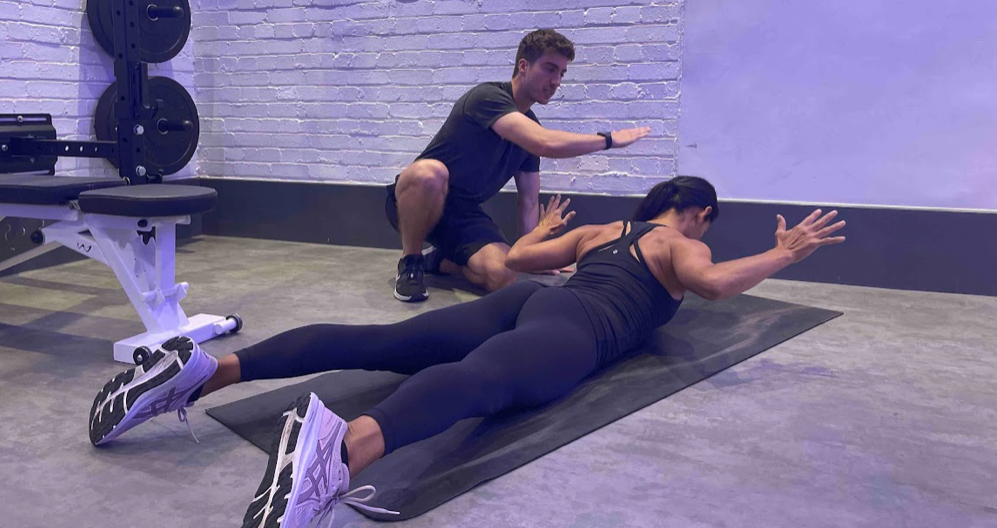
To perform a Superman:
- Lie face down on the ground and stretch both arms out in front of the body, keeping the legs stretched out and flat on the ground.
- Raise both the hands and feet, aiming to create a gap of about 6 inches between them and the floor.
- Try to pull in the belly button, lifting it off the floor to engage the core muscles.
- Keep the head straight and look at the floor to avoid neck injury.
- Stretch the hands and feet outward as far as possible.
- Hold the position for 2 seconds.
- Return to the starting position.
- Repeat 10 times.
Both of these exercises can be progressed by increasing the number of reps performed.
What other therapies can help with lower back pain?
Depending on what is causing your lower back pain will determine which therapies will help alleviate the pain. Back pain doesn’t sort itself out on its own, however 9 times out of 10 it will be something simple in your daily routine that you can change to prevent it getting any worse and turning into pain that is completely debilitating.
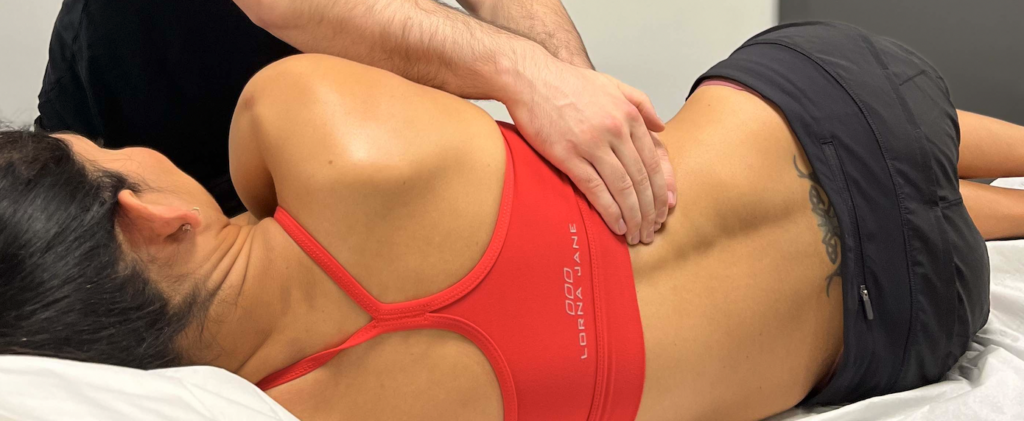
Alternative therapies such as physiotherapy and chiropractors use a multitude of methods depending on your symptoms and causation. Always seek professional advice rather than medicating yourself.
Interested in hearing how personal training can help you deal with the pain of sitting in a chair all day? We’ll love to hear from you and tell you what we can do!
